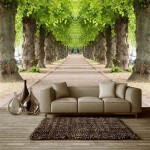```html
How To Decorate for Fall: A Comprehensive Guide
Fall, often associated with vibrant foliage, crisp air, and a sense of warmth, provides ample inspiration for home decor. Transitioning a living space from the light and airy feel of summer to the cozy ambiance of autumn involves incorporating specific colors, textures, and thematic elements. Successfully decorating for fall requires a strategic approach, considering both aesthetic appeal and personal preferences.
The process involves selecting appropriate color palettes, utilizing natural elements, incorporating textiles that evoke warmth, and strategically deploying lighting techniques. Attention to detail is crucial. A cohesive and well-executed fall decor scheme can enhance the overall atmosphere of a home, creating a welcoming and inviting environment for residents and guests alike.
Selecting a Fall Color Palette
Choosing a color palette is the foundation of any successful fall decor project. While traditional autumn colors like orange, red, and yellow remain popular choices, exploring alternative palettes can lead to unique and sophisticated results. Consider the existing color scheme of the home and select complementary colors that enhance, rather than clash, with the current decor.
Classic Fall Tones: Deep oranges, rustic reds, and golden yellows immediately evoke the feeling of autumn. These colors can be incorporated through various decorative elements, such as throw pillows, blankets, and accent pieces. Avoid using overly bright or neon versions of these colors, opting instead for muted and earthy tones.
Neutral Undertones: Beige, cream, and gray provide a neutral backdrop that allows other fall colors to stand out. These colors can be used for larger furniture pieces, wall paint, or area rugs. Incorporating neutral undertones creates a sense of balance and prevents the overall decor from feeling overwhelming.
Earthy Browns and Greens: Brown represents the earth and provides a grounding element to any fall decor scheme. Dark browns can be incorporated through wooden furniture or decorative accents. Olive green and other muted greens evoke the feeling of nature and complement the other fall colors.
Unexpected Accents: Introducing unexpected accent colors can add a touch of personality and sophistication to the fall decor. Deep purples, navy blues, and even metallic accents like gold or copper can create visual interest and prevent the decor from feeling predictable.
When choosing colors, consider the overall ambiance that one aims to achieve. Warm colors create a cozy and inviting atmosphere, while cooler colors can add a touch of sophistication and elegance. Balancing warm and cool tones is crucial for achieving a harmonious and visually appealing result.
Incorporating Natural Elements
Fall is a season characterized by the beauty of nature, making natural elements ideal for fall decor. Bringing the outdoors in through the use of organic materials can enhance the authenticity and warmth of a living space.
Pumpkins and Gourds: Pumpkins and gourds are quintessential fall decorations. They come in various shapes, sizes, and colors, making them versatile elements for both indoor and outdoor displays. Arrange them on mantels, entryways, or dining tables to create a festive atmosphere. Consider painting or embellishing pumpkins and gourds to match the chosen color palette.
Foliage and Branches: Colorful fall leaves are a beautiful and free resource for decorating. Collect fallen leaves and arrange them in vases or create garlands to hang on walls or doorways. Bare branches can also be used to create interesting displays. Consider placing branches in a vase or attaching fall-themed ornaments to them.
Pinecones and Acorns: Pinecones and acorns are another readily available natural element that can be used for fall decor. Arrange them in bowls or baskets to create simple yet elegant displays. Pinecones can also be painted or glittered for added visual appeal.
Dried Flowers and Grasses: Dried flowers and grasses add texture and visual interest to fall decor. Arrange them in vases or incorporate them into wreaths and garlands. Choose flowers and grasses that complement the chosen color palette and create a sense of rustic charm.
Wood and Stone: Incorporating wooden and stone elements can add a sense of warmth and grounding to fall decor. Use wooden bowls, trays, or candlesticks to display other decorative items. Stone accents, such as river rocks or slate tiles, can be used to create unique and natural displays.
When incorporating natural elements, ensure they are clean and free of pests. Consider sealing or preserving certain items, such as leaves and branches, to prolong their lifespan. Arrange natural elements in a way that is both visually appealing and functional, avoiding clutter and ensuring that they do not obstruct pathways or views.
Enhancing Ambiance with Textiles and Lighting
Textiles and lighting play a critical role in creating a cozy and inviting atmosphere for fall. Strategic use of these elements can transform a living space from feeling cold and sterile to warm and welcoming.
Warm and Cozy Textiles: Incorporating warm and cozy textiles is essential for creating a comfortable fall ambiance. Throw blankets, pillows, and rugs made from materials like wool, flannel, and faux fur can add texture and warmth to a room. Choose textiles in fall colors and patterns to complement the overall decor scheme.
Layering Textiles: Layering textiles is a technique that involves combining different textures and patterns to create depth and visual interest. Layer throw blankets on sofas and chairs, and add multiple layers of pillows in varying sizes and shapes. Layering rugs can also add warmth and visual appeal to a room.
Curtains and Drapes: Heavy curtains and drapes can help to insulate a room and create a sense of privacy. Choose curtains in fall colors and patterns, or opt for neutral-colored curtains made from thick, insulating materials. Consider adding tiebacks or curtain rods with decorative finials to enhance the overall look.
Ambient Lighting: Soft, warm lighting is crucial for creating a cozy fall atmosphere. Avoid bright, harsh lighting and opt for dimmer switches and lamps with warm-toned bulbs. Consider using candles, string lights, and lanterns to add a touch of ambiance.
Candles and Lanterns: Candles and lanterns are a classic way to add warmth and ambiance to a room. Choose candles in fall scents, such as pumpkin spice, apple cinnamon, or woodsmoke. Arrange candles in groups or place them in decorative lanterns for added visual appeal.
String Lights: String lights can be used to create a festive and whimsical atmosphere. Hang them around windows, doorways, or fireplaces to add a touch of sparkle. Consider using string lights with warm-toned bulbs to create a cozy and inviting ambiance.
The interplay between textiles and lighting is crucial. Soft, warm lighting complements the textures of cozy blankets and pillows, creating a synergistic effect that enhances the overall comfort and visual appeal of the space. Experimenting with different combinations of textiles and lighting techniques can result in a personalized and inviting fall decor scheme.
Implementing these strategies will result in a home decorated tastefully and effectively for the season of fall. Thoughtful planning combined with an appreciation for color, texture, and natural elements can create a living space that embodies the essence of autumn.
```
When To Start Decorating For Fall Balsam Hill

How To Decorate For Fall Like The Pros Taste Of Home

66 Easy Fall Decorating Ideas To Elevate Your Home In 2025

How To Decorate Your Home For Fall In A Tasteful Manner Worthing Court Diy Decor Made Easy

Fall Decorating Ideas Canary Street Crafts

Fall Decorating Ideas From

Fall Decorating Ideas 23 Easy Autumn Decor 2025 Guide

Fall Fireplace Decorating Tips Sanctuary Home Decor

Outdoor Fall Decorating With Lanterns And A Giveaway Stonegable

Pumpkin Décor Ideas For Fall Balsam Hill
Related Posts







